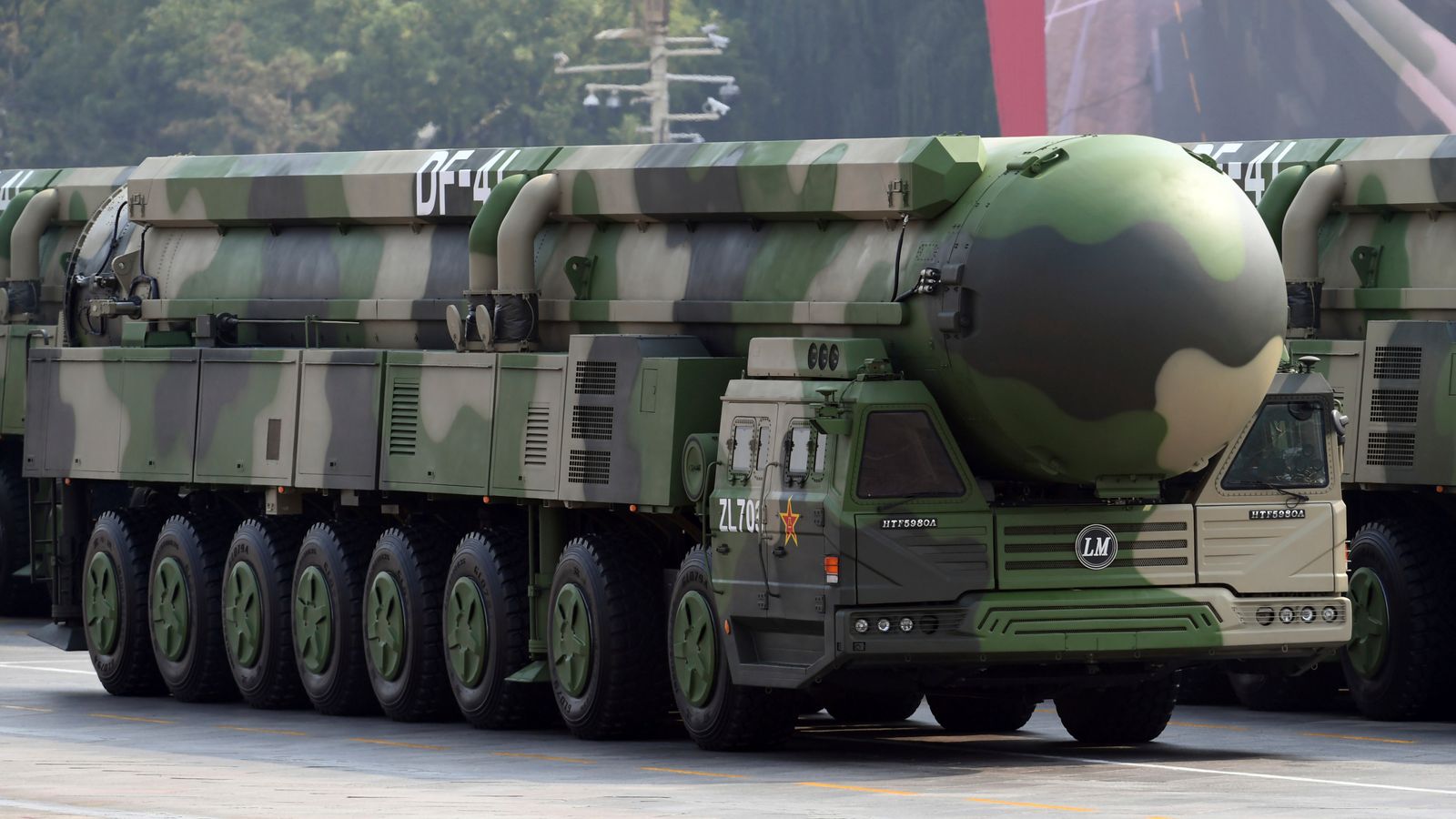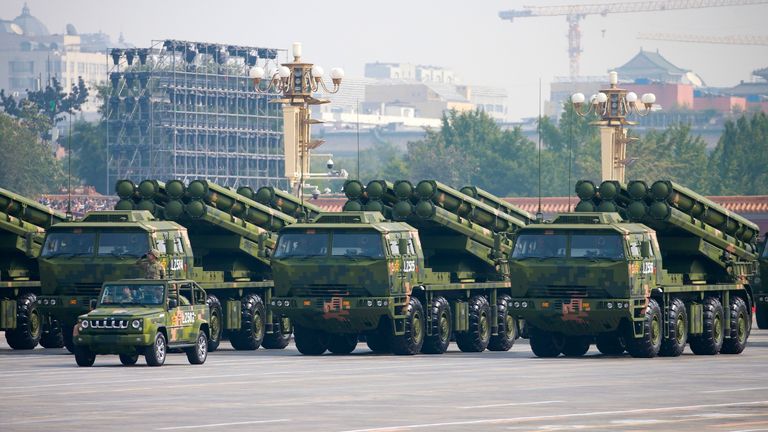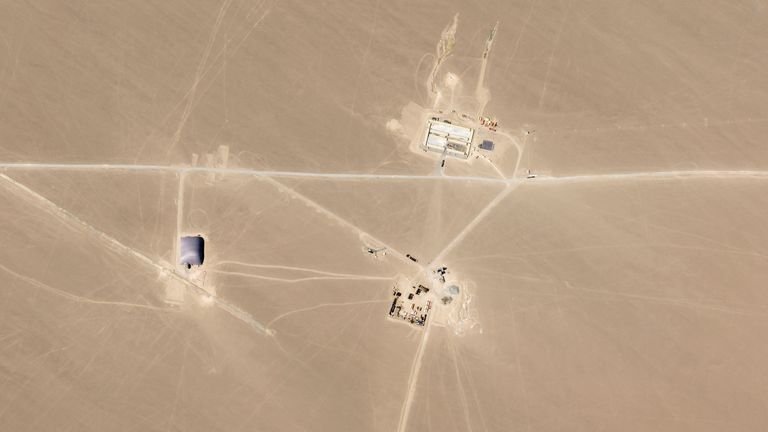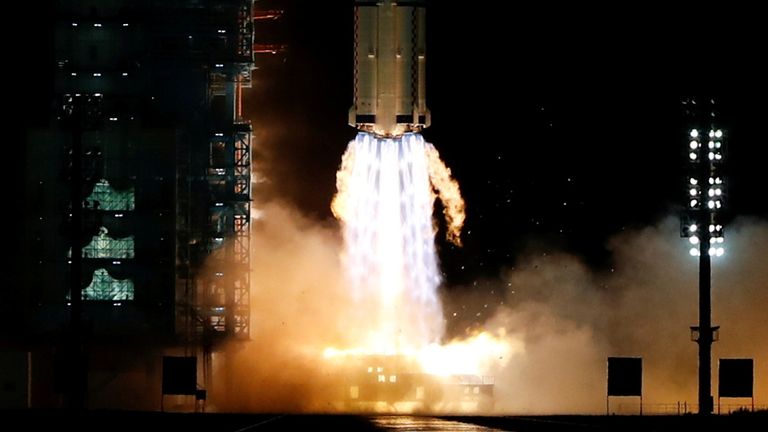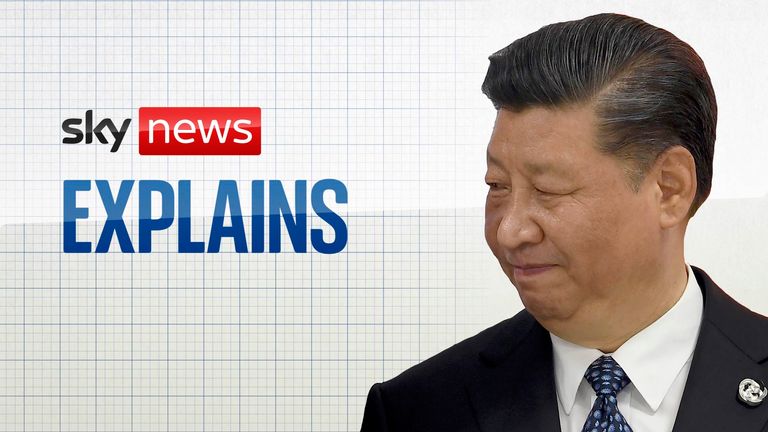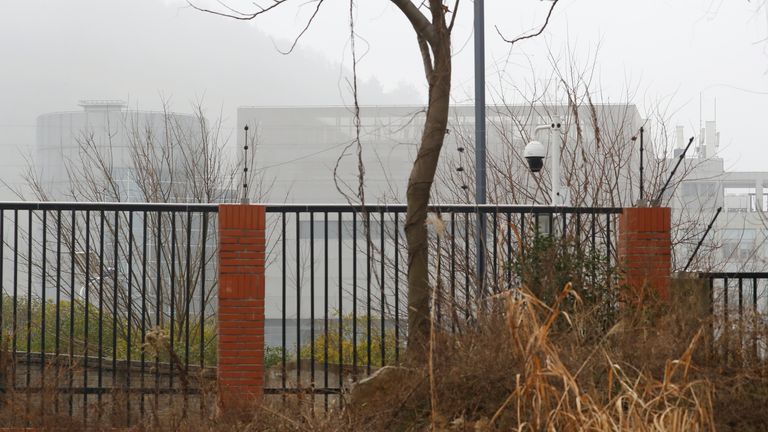China is expected to have at least 1,000 nuclear warheads by 2030, according to a new projection by the US military – a significant acceleration of its nuclear weapons programme.
The Pentagon’s analysis sharply increased its estimate of China‘s upcoming nuclear weapon capability over the coming years, in its latest report.
It projected Beijing could have 700 warheads by 2027 and would increase that number in the years after.
While China’s nuclear stockpile would remain lower than that of the US and Russia, analysts said it poses concerns as it comes at a time when Beijing is increasingly assertive, especially in its own backyard.
The previous projection was that the Chinese arsenal would top 400 by the end of the decade.
The US has frequently called on China to join it and Russia in a new arms control treaty.
In its annual report to Congress on China’s military strength, the Pentagon highlighted tensions over the self-ruled island of Taiwan, which China sees as a breakaway province, and discussed China’s chemical and biological programmes and technological advancements.
It said open warfare was unlikely but backed an idea emerging in the US that China’s military, called the People’s Liberation Army or PLA, is determined to challenge America in all warfare arenas – air, land, sea, space and cyberspace.
China was pursuing a network of overseas bases and logistics hubs that “could interfere with” American military operations and support Chinese military operations against the US, the report added
But it placed the most emphasis on the growing size of China’s nuclear arsenal, saying: “Over the next decade, the PRC [China] aims to modernise, diversify, and expand its nuclear forces.”
The report added: “The PLA’s evolving capabilities and concepts continue to strengthen [China’s] ability to ‘fight and win wars’ against a ‘strong enemy’ – a likely euphemism for the United States.”
What is China’s nuclear capability?
The previous Pentagon estimate was that the number of Chinese warheads was in the “low 200s”. This compares with 3,750 US nuclear warheads, of which 1,389 were deployed on 1 September.
The Pentagon report said the Chinese may now have what is known as a nuclear triad – the combination of land, sea, and air-launched missiles that the US and Russia have had for decades.
The air-launched ballistic missile is the latest to be developed.
The report added the country’s military had started building at least three intercontinental ballistic missile (ICBM) silo fields, which “cumulatively contain hundreds” of underground silos from which ICBMs could be launched.
China says its arsenal is a fraction of that possessed by the US and Russia, and it is ready for dialogue, but only if Washington reduces its nuclear stockpile to China’s level.
President Joe Biden‘s administration is undertaking a comprehensive review of its nuclear policy and has not said how that might be affected by concerns over Chinese activities.
The Pentagon report was based on the situation in December 2020 and so does not include a reference to China’s apparent tests of a hypersonic weapon.
What’s the danger?
Beijing has vowed to bring Taiwan, an established democracy, under its rule and its military has been increasingly active in the strait between the island and the mainland.
The Pentagon report outlined several scenarios Beijing could pursue, including everything from a joint blockade campaign against Taiwan to a full-scale amphibious invasion, air and missile strikes, cyber attacks or seizing offshore islands.
But a senior US defence official, who briefed reporters after the release of the report, declined to say if they saw a risk of armed conflict between Beijing and Taipei and refused to say which scenario was the most likely.
Separately, America’s top general said on Wednesday that China was unlikely to try to capture Taiwan in the next couple of years.
General Mark Milley, chairman of the Joint Chiefs of Staff, said: “Based on my analysis of China, I don’t think that it is likely in the near future – being defined as, you know, six, 12, maybe 24 months, that kind of window.”
What are the other risks?
The Pentagon report included a section on China’s biological weapons programme, but did not look at whether COVID-19 originated there.
It did, however, question whether China was complying with international biological and chemical weapons agreements, citing studies of “potent toxins” conducted at military medical institutions.
There has been increasing attention paid to China’s chemical and biological capabilities after COVID-19 was first identified in late 2019 in Wuhan, where there is a biological research facility.
China has consistently denied allegations that the virus was leaked from the specialist laboratory.
